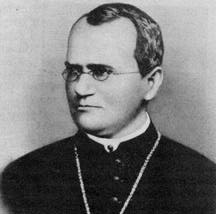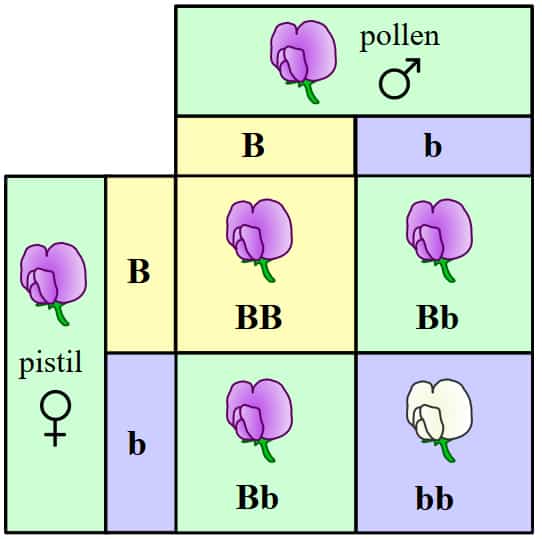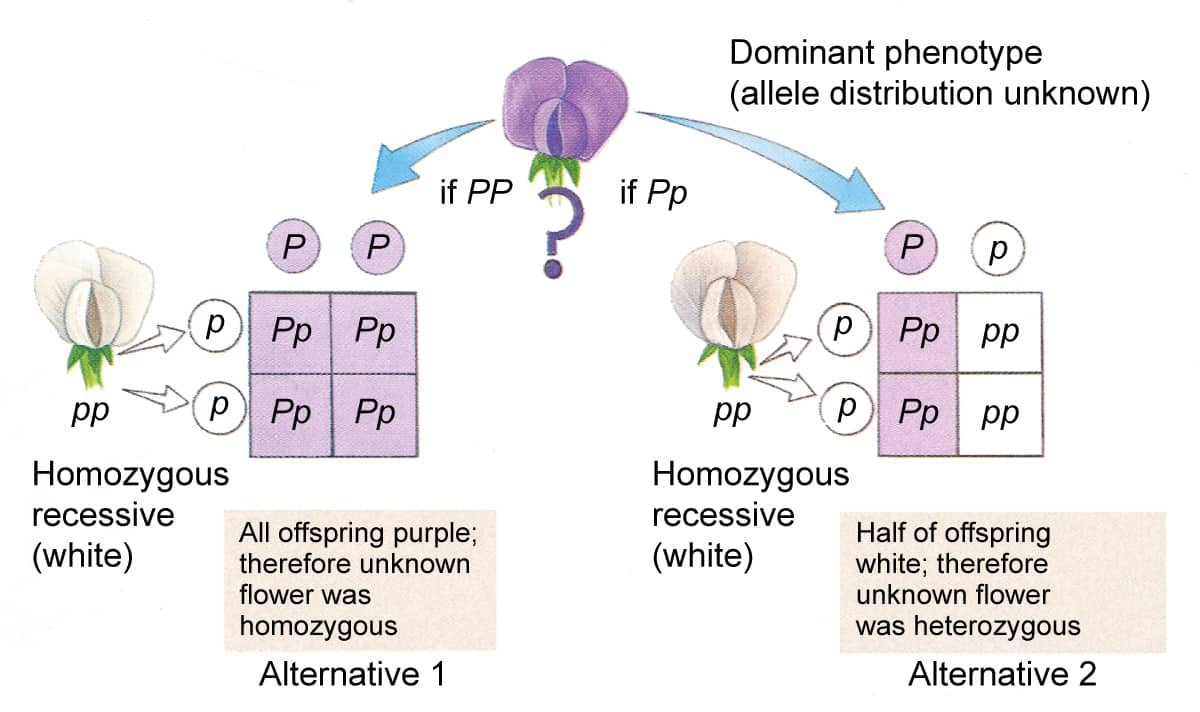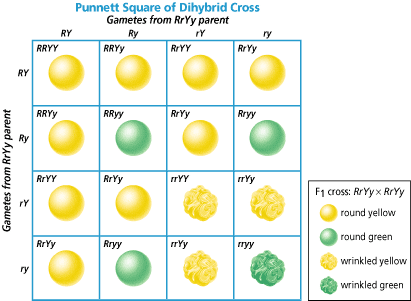Gregor Mendel is considered the “father” of genetics because he offered the first significant insights into the mechanisms involved in the  inheritance of biological traits. His discoveries were made during the mid 19th century.
inheritance of biological traits. His discoveries were made during the mid 19th century.
Mendel was a Moravian monk who spent several years at the University of Vienna studying science to become a high school teacher. He eventually returned to a monastery in the Czech Republic where he performed his famous experiments in genetics.
Reasons why he used pea plants:
- They don’t take long to breed
- There isn’t a case of “ethics” here
- Peas have easy to observe traits
Mendel had a ‘mathematical’ approach to this experiment.The popular theory that inheritance was blended, was disproved by Mendel. He took two pure breeding pea plants, one short and one tall. He fertilized them with the opposite trait. This generation was called the ‘Parent Generation’ Both plants yielded only ‘Tall’ plants. This offspring was named ‘Filial Generation’. Again, he fertilized them and this generation was called “Second Filial Generation” and they yielded both short and tall plants.
CONCLUSION: The short trait didn’t disappear entirely, rather it was recessive.
The ratio that the F2 generation yielded persisted in every single experimental breeding. This ratio is called ‘Genotypic Ratio’
So Mendel arrived at the conclusion that:
- The F1 generation had two versions, alleles of the same gene, from their parents. One was ‘recessive’ and the other was ‘Dominant’.
Mendel was Successful because:
1. He knew that duplicating his experimental crosses thousands of times would lend validity to his results and explanations.
2. He used mathematical probabilities to strengthen his work.
3. He used the common pea plant.
– He could control the parental crosses
– They were easy to grow, they matured quickly and produced many seeds.
( produce many generations of offspring quickly à more data)
( get results quickly)
– Common pea plants have several pairs of obvious, contrasting traits.
(easy to determine phenotypes)
4. He kept accurate quantitative records of his experiments.
Mendel’s Laws:
Law of Dominance
One factor from a pair of alleles will be dominant over the other, i.e. there exists a dominant allele for a every recessive allele. This determines whether an individual is a heterozygous dominant or a homozygous dominant/ recessive.
- These two factors separated randomly with a 50-50 chance during gamete formation.
- The F2 generation receives random combinations from both their parents to increase variations and preserve advantageous traits.
Mendel’s Law of segregation
Each organism initially receives two alleles for the same gene from its parents, but later separate and segregate into two different gametes during gamete formation.
Law of Independent Assortment
The law of independent assortment states that members of one pair of factors assort independently of members of another pair of factors, to increase combinations and possible variation.
Punnett Square
Punnett squares are used to predict the possibility of a particular outcome in a breeding experiment. It was introduced by poultry  geneticist in the 1900s.It can be used with monohybrid and dihybrid crosses. On one side of the square, phenotypes of the male gamete is listed. On the other side phenotypes of the Female gamete is listed.Then, we match both sides, and list all possible outcomes within the squares.The Genotypic Ratio is 1:2:1 and the Phenotypic Ratio is 3:1.“Chance has no memory”, so if a mother bears a child with a trait that had a 25% possibility, in her next pregnancy, that chance doesn’t diminish.
geneticist in the 1900s.It can be used with monohybrid and dihybrid crosses. On one side of the square, phenotypes of the male gamete is listed. On the other side phenotypes of the Female gamete is listed.Then, we match both sides, and list all possible outcomes within the squares.The Genotypic Ratio is 1:2:1 and the Phenotypic Ratio is 3:1.“Chance has no memory”, so if a mother bears a child with a trait that had a 25% possibility, in her next pregnancy, that chance doesn’t diminish.
We know that a trait is controlled by two alleles, i.e. versions of the same gene, located on the same loci. The recessive trait is denoted by a small (lowercase) letter and the dominant trait is denoted by a Capital (uppercase) letter.
These alleles are located on the same loci in both, maternal and paternal chromosome, but might differ as in whether its dominant or recessive.
The maternal and paternal pair of chromosomes is called a Homologous pair.
According to the alleles inherited, the organism is categorized into HETEROZYGOUS and HOMOZYGOUS.
- Homozygous refers to the case when you receive identical alleles on the same loci.
- Heterozygous refers to the case when you don’t inherit identical alleles on the gene locus.
It is necessary to determine genotype because an organism with a particular trait could be homozygous or heterozygous. Hence, knowing genotype is important.
While individual organisms have two alleles, its gamete only has one allele, distributed randomly.
A testcross is done to determine the genotype of a suspected heterozygous individual. It is done by crossing a homozygous recessive individual with the said heterozygote.
If the results come out in the ratio of 1:1, then the individual is a heterozygote.
Dihybrid Crosses
They are the product of two different traits, independent of each other. For example, tall and yellow peas, with short and wrinkled peas.
There were two possible outcomes.
- First, the dominant characteristics from both traits could assort themselves together, and the recessive ones together.
- This would result in two phenotypes.
- One would be homozygous dominant phenotype and the other homozygous recessive.
- Else, the factors or alleles could be independent from each other and segregate themselves without any dependence on the other alleles.
- This would result in FOUR phenotypes
- This would result in FOUR phenotypes



